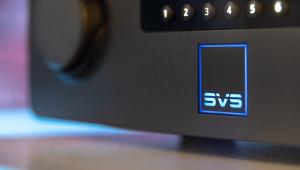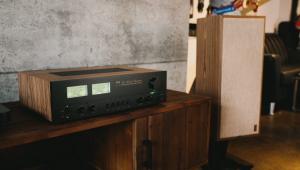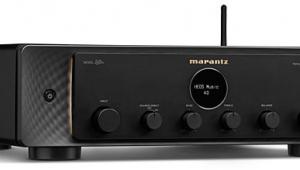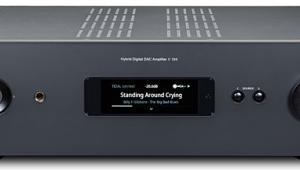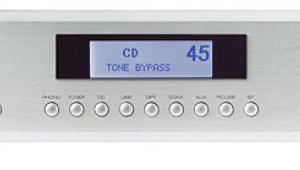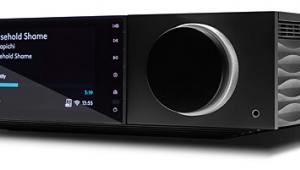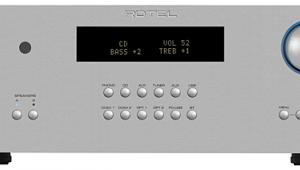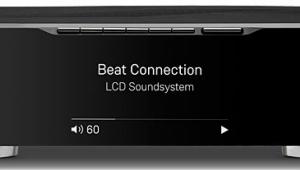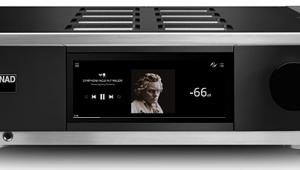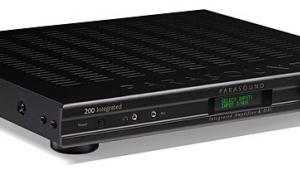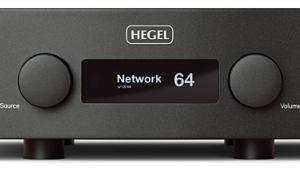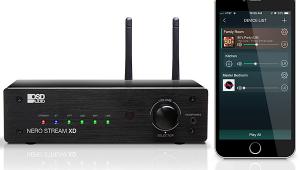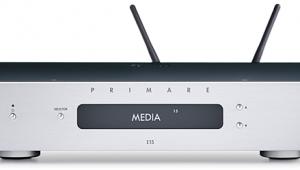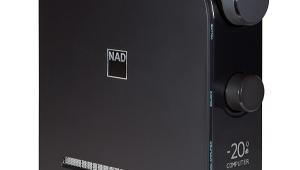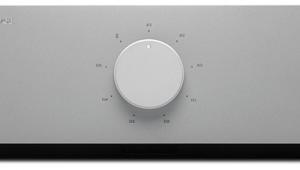Hegel Music Systems H390 Integrated Amplifier Review Page 2
Performance
Even before I started any serious evaluation of the H390, I was conscious of the improvement it was bringing to my system. My GoldenEar speakers literally perked up, as if the towers had been given a vitamin B12 injection. This was no doubt due to the increase in power from the 150Wpc on my regular integrated amp to the Hegel's 250Wpc, but I also found that AirPlay streaming using my iPhone, which I normally do just for background music, yielded better sound than I generally expect.
Getting down to critical listening, I first queued up a CD of Ray Lamontagne's albumbr Till the Sun Turns Black and played the upbeat, soulful "Three More Days." I was immediately struck by the punchy quality of the hi-hat, which sounded crisp without being edgy. The H390 managed to flesh out the various layers of instruments in the mix, and even when the song scaled up in volume and intensity toward its climax, I could hear distinct separation between the electric guitar, drums, and brass section. An electric bass guitar that anchored the track also retained its clarity and fullness, while LaMontagne's energetic vocals held a center focus in the mix.
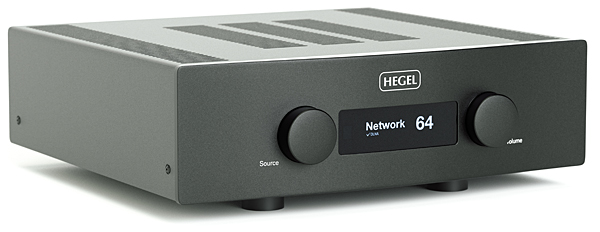
The 50th anniversary Super Deluxe Edition of the Beatles' Abbey Road had just been released around the time I was unpacking the H390, so I made a point of giving it a listen as part of my test. Streaming "Because" in 24/96 hi-res format from Tidal via Roon on my laptop, the massed vocals had a warm, dense quality, and there was an effortless sense of bloom as the voices swelled and dipped in level. The soundstage on this track also came across as impressively wide on the H390, with the hard-panned keyboards and guitar extending well out to the left-right boundaries of my room.
Along with the Abbey Road 50th, another music-related event that coincided with my unboxing of the H390 was the new Ken Burns documentary, Country Music, on PBS. Previously, my familiarity with the genre was mostly limited to Hank Williams, Patsy Cline, and Johnny Cash. But after watching the series, I was now in the know about The Carter Family, Jimmie Rodgers, Lefty Frizzell, and many others. Listening to a 16/44.1 Tidal stream of a contemporary version of the Carter Family's "Single Girl, Married Girl" performed by jazz bassist Charlie Haden along with his daughters on the album Family & Friends: Rambling Boy, the song's acoustic guitars and standup bass had a full, natural sound, while the harmonica sounded crisp without betraying too much metallic bite. What most impressed me about the Hegel's performance on this track, however, was the manner in which it accurately conveyed the subtly clever positioning of vocals in the production: bunched up at the center, as the singers would have been surrounding a single microphone on an old-time country radio show.
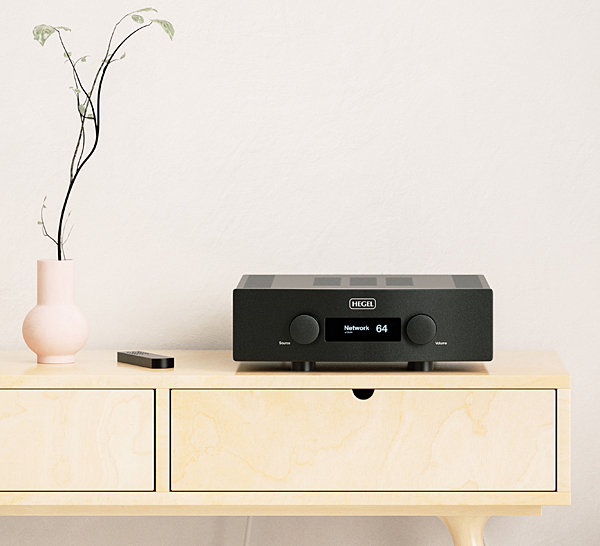
At this point in my test, it had become clear that the Hegel amp's main benefits were its clean, highly transparent rendering of recordings and effortlessly dynamic presentation. Both those points were driven home when I played "Prayer for Passive Resistance" from Mingus at Antibes, a track I'd recently become familiar with when demo'd in the GoldenEar Tech booth at the 2019 CEDIA Expo. The room ambience in this live recording was almost palpable, and Charles Mingus's instrument had a realistic sense of scale as he belted out his bass lines. A subtle Mingus solo in this track was subtly rendered against a dead-silent back- ground, allowing for an impressive dynamic contrast when the drums and brass eventually snapped back in.
Most of the above comments pertain to the Hegel-GoldenEar Tech Triton Five setup. Toward the end of my evaluation, however, I switched over to using Polk Audio's new Legend L800 tower, a true full-range speaker that uses dual 10-inch woofers and is spec'd for a nominal impedance of 2.8 to 4 ohms. Listening again to the Ray LaMontagne and Charles Mingus tracks on my test playlist, the Hegel amp exerted effortless control over the larger woofers on the L800 towers, and in both cases bass extension and output sounded linear even at low listening levels. Also, when playing another track I added to the mix, "Midas Tongue" by Sam Beam and Jesca Hoop, the song's percussion had a full, authoritative presence with excellent snap and drive.
Conclusion
At $6,000, Hegel's H390 will be a pricey proposition for many people. But looked at from another angle, it incorporates many of the same features and, according to the company, offers much of the same performance, as Hegel's $11,000 flagship H590 integrated amplifier—apparently so much so that its marketing refers to the H390 as "Robin Hood" because it robs from the rich and gives to the, well, not as rich.
Whether or not you think six grand is a fair price to pay for an integrated amp, the H390's notably excellent sound, impressive build quality, well- considered feature set, and flexible setup options make it a very intriguing prospect, especially if you plan to pair it with large or power-hungry speakers. The H390 tilts toward the rarified realm of perfectionist audio, but even in that world it would be considered a good deal.

